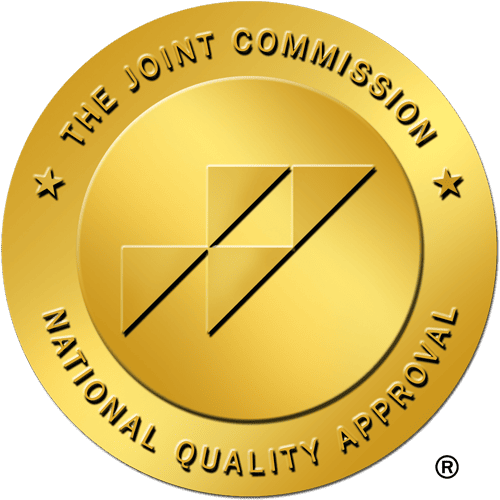Identifying Signs of Burnout in the Workplace
Burnout Prevention : Burnout in the workplace is a prevalent issue that can have detrimental effects on both individuals and organizations. Recognizing the signs of burnout is crucial in addressing the problem before it leads to more serious consequences. One common sign of burnout is a diminishing sense of accomplishment and satisfaction in one’s work. When individuals start to feel overwhelmed, detached, and disengaged from their tasks, it may indicate a deeper issue at play. Additionally, increased irritability, mood swings, and a negative attitude towards work are red flags that should not be dismissed lightly.
Moreover, physical symptoms such as headaches, insomnia, and increased susceptibility to illnesses can also point towards burnout. When stress levels escalate to unsustainable levels, the body’s defenses weaken, making individuals more prone to physical ailments. Paying attention to these bodily warning signs is essential in
preventing burnout from reaching a critical stage. By acknowledging and addressing these indicators early on, individuals can take proactive steps to prioritize their well-being and prevent burnout from spiraling out of control.
The Impact of Stress and Burnout on Mental Health
Prolonged exposure to chronic stress and burnout in the workplace can have detrimental effects on an individual’s mental health. The constant pressure to meet deadlines, handle heavy workloads, and navigate office politics can lead to feelings of exhaustion, irritability, and a lack of motivation. Over time, this can contribute to the development of anxiety disorders, depression, and other mental health issues.
Moreover, the impact of stress and burnout on mental health can also manifest in physical symptoms such as headaches, muscle tension, and sleep disturbances. When left unaddressed, these symptoms can further exacerbate the individual’s overall well-being, leading to a decline in productivity, poor job performance, and strained interpersonal relationships. It is crucial for organizations to prioritize the mental health of their employees and implement strategies to mitigate the adverse effects of workplace stress and burnout.
Effective Strategies for Managing Work-Related Stress
To effectively manage work-related stress, it is crucial to prioritize tasks and create a realistic schedule. By breaking down larger projects into smaller, manageable tasks and setting realistic deadlines, individuals can prevent feeling overwhelmed or bogged down by the demands of their workload. Additionally, utilizing time management techniques such as the Pomodoro method, where work is divided into intervals with short breaks in between, can help maintain focus and productivity while reducing stress levels.
Another strategy for managing work-related stress is to practice effective communication and boundary-setting in the workplace. Clearly outlining expectations with supervisors or colleagues, as well as learning to say no when necessary, can prevent taking on too much work or feeling pressured to always be available. Establishing healthy boundaries can help create a more balanced and sustainable work environment, ultimately reducing the impact of stress on overall well-being.
Burnout Prevention : The Role of Self-Care in Preventing Burnout
Self-care plays a crucial role in preventing burnout among individuals in the workplace. It involves prioritizing one’s physical, emotional, and mental well-being to maintain a healthy balance in both personal and professional life. Engaging in self-care practices allows individuals to recharge, replenish their energy levels, and enhance their resilience to cope with the demands of their job.
Implementing self-care strategies can vary from person to person, depending on their preferences and needs. This could involve setting aside time for relaxation activities such as meditation, exercise, hobbies, or spending quality time with loved ones. Additionally, practicing mindfulness, getting an adequate amount of sleep, and eating a balanced diet are essential aspects of self-care that can help individuals manage stress levels and prevent burnout from taking a toll on their overall well-being.
Utilizing Mindfulness Techniques to Combat Stress
Mindfulness techniques have gained significant recognition in recent years as effective tools for combating stress in the workplace. By incorporating practices such as deep breathing exercises, meditation, and focused awareness of the present moment, individuals can cultivate a sense of calm and clarity amidst the pressures of their professional responsibilities. When practiced regularly, mindfulness techniques can help employees enhance their resilience to stressful situations, improve concentration and decision-making skills, and foster a greater sense of self-awareness.
Incorporating mindfulness into daily routines can greatly contribute to creating a more balanced and harmonious work environment. Employers can support their staff in utilizing these techniques by providing resources such as mindfulness training sessions, designated quiet spaces for meditation, and encouraging regular breaks for reflection. By fostering a culture that values mindfulness practices, organizations can empower their employees to manage stress effectively, enhance overall well-being, and increase productivity in the workplace.
The Importance of Setting Boundaries in the Workplace
Setting boundaries in the workplace is essential for maintaining a healthy work environment. By clearly delineating what is acceptable in terms of workload, communication, and personal time, individuals can prevent burnout and foster better work-life balance. Without proper boundaries, employees may find themselves overwhelmed with unrealistic expectations, leading to increased stress and decreased job satisfaction.
Establishing boundaries also helps to promote respect and professionalism in the workplace. When individuals clearly communicate their limits and needs, it sets a precedent for how they expect to be treated by colleagues and supervisors. This can result in improved collaboration, as everyone understands each other’s boundaries and can work together more effectively. Ultimately, setting boundaries is not only about protecting one’s well-being, but it is also about creating a more harmonious and productive work environment for all.
Building Resilience Through Stress Management Programs
To build resilience through stress management programs, organizations can implement various initiatives aimed at equipping employees with the tools to effectively cope with and bounce back from workplace stressors. These programs often include workshops, training sessions, and resources focused on stress awareness, mindfulness practices, and healthy coping mechanisms. By providing employees with the necessary skills and support to navigate stressful situations, companies can foster a more resilient workforce capable of handling the challenges that arise in the fast-paced and demanding work environment.
In addition to formal stress management programs, organizations can also encourage a culture of open communication and support within the workplace. By promoting dialogue around mental health and well-being, leaders can create a supportive environment where employees feel comfortable seeking help and discussing their stress levels. Furthermore, fostering a sense of community and teamwork can enhance resilience among employees, as individuals feel more connected and supported by their colleagues. By prioritizing resilience-building initiatives and cultivating a positive work culture, organizations can proactively address stress and promote employee well-being.
Seeking Support and Resources for Burnout Prevention
Identifying and acknowledging the signs of burnout is the first step towards seeking support and resources for prevention. It is essential for individuals to pay attention to physical and emotional symptoms such as chronic fatigue, irritability, decreased motivation, and feelings of cynicism towards work. Once these indicators are recognized, it is crucial for individuals to reach out to their HR department, a mental health professional, or a trusted colleague for guidance and support. By speaking up about their experience and seeking assistance, individuals can proactively address burnout before it escalates into a more severe issue.
Furthermore, organizations play a vital role in providing resources and support for employees experiencing burnout. Corporate wellness programs, employee assistance programs (EAPs), and mental health initiatives can offer tools and services to help individuals cope with stress and prevent burnout. Employers should create a culture that values open communication, encourages work-life balance, and promotes mental health and well-being among their workforce. By fostering a supportive environment and offering resources for burnout prevention, organizations can cultivate a healthier and more productive workplace for their employees.
– It is important for individuals to pay attention to physical and emotional symptoms such as chronic fatigue, irritability, decreased motivation, and feelings of cynicism towards work.
– Reach out to HR department, a mental health professional, or a trusted colleague for guidance and support.
– Speaking up about their experience and seeking assistance can proactively address burnout before it escalates into a more severe issue.
– Organizations should provide resources like corporate wellness programs, employee assistance programs (EAPs), and mental health initiatives.
– Create a culture that values open communication, encourages work-life balance, and promotes mental health among employees.
– By offering resources for burnout prevention, organizations can cultivate a healthier and more productive workplace.
Creating a healthy work-life balance is essential for burnout prevention
In today’s fast-paced work environment, maintaining a healthy work-life balance is essential in preventing burnout. Striking a balance between work responsibilities and personal life can help individuals reduce stress levels and improve overall well-being. By setting clear boundaries and prioritizing self-care, employees can enhance their productivity and job satisfaction while safeguarding against burnout.
Establishing a healthy work-life balance involves creating clear distinctions between work time and personal time. This may include setting specific work hours, limiting after-hours communication, and dedicating time to activities outside of work that promote relaxation and rejuvenation. By making conscious efforts to separate work and personal life, individuals can prevent burnout and cultivate a more sustainable approach to their professional and personal responsibilities.
Implementing Wellness Programs in the Workplace
Wellness programs in the workplace have become increasingly crucial for promoting the health and well-being of employees. By offering a variety of initiatives such as fitness classes, mental health resources, and healthy eating options, organizations can create a more supportive and productive work environment. These programs not only help prevent burnout but also boost employee morale, satisfaction, and overall job performance.
Employers who prioritize implementing wellness programs demonstrate their commitment to the health and happiness of their employees. Whether through providing access to counseling services, organizing stress management workshops, or encouraging work-life balance practices, companies can foster a culture of self-care and mental well-being. Investing in wellness programs is not only beneficial for employees but also contributes to a more positive and engaged workplace atmosphere.




